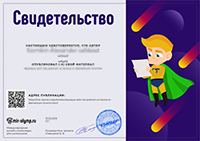Дарси 4: The Present Continuous (Progressive) Tense.
Замони њозираи давомдор
Замони њозираи давомдор Present Continuous Tense дар ваќти гуфтугў иљрошуда истодани амалро ифода мекунад:
What are you doing?
I am writing, (нигаред ба љадвал)
a) Present Continuous Tense бо ёриифеъли to be (будан) дар шакли Present Indefinite (am, is, are) ва сифати феъли замони њозираи феъли асосї
То be + Participle I
Замони њозираи давомдор метавонад, ки амали ояндаро низ ифода кунад, дар њамон њолате, ки амали иљро мешуда катъї бошад (яъне пештар ба накша гирифта шуда бошад). Мисол:
I am leaving tomorrow. Ман пагох меравам.
Не is coming to us next week. Ў хафтаи оянда хоњад омад.
Present Continuous Tense ба замони њозираи давомдори забони тољикї монандї дорад ва зарфи замон «now» (њозир) бо ин замон кор фармуда мешавад:
| Шакли тасдикї Affirmative | Шакли саволї Interrogative | Шакли инкорї Negative |
| I am writing. Ман навишта истодаам. | Am I writing? Оё ман навишта истодаам? Yes, I am. No, I am not. (No, I'm not.) Њa (He.) | I am not writing. Ман нанавишта истодаам. |
| You are writing. Ту навишта истодаї. | Are you writing? Yes, you are. No, you are not. (No you aren't.) Њa (He.) | You are not writing. Ту нанавишта истодаї. |
| He is writing. Вай навишта истодааст. | Is he writing? Оё вай навишта истодааст? Yes, he is. No, he is not). (No, he isn't.) Њa (He.) | He is not writing. Вай нанавишта истодааст. |
| She is writing. Ў навишта истодааст. | Is she writing? Оё у навишта истодааст? Yes, she is. No, she is not. (No, she isn't.) Њa (He.) | She is not writing. Ў нанавишта истодааст. |
| It is playing. Вай бозї карда истодааст. | Is it playing? Вай бозї карда истодааст? Yes, it is. No, it is not. (No, it isn't.) Њa (He.) | It is not playing. Вай бозї накарда истодааст. |
| We are writing. Mo навишта истодаем. | Are we writing? Оё мo навишта истодаем? Yes, we are. No, we are not. (No, we aren't.) Њa (He.) | We are not writing. Mo нанавишта истодаем. |
| You are writing. Шумо навишта истодаед. | Are you writing? Оё шумо навишта истодаед? Yes, you are. No, you are not. (No, you aren't.) Њa (He.) | You are not writing. Шумо нанавишта истодаед. |
Феълњое, ки њиссиётро, аќлрониро ифода менамоянд ва баъзе дигар феълњо дар ин замон истифода бурда намешавад.
to want to hear
to like to feel
to love to know
to wish to understand
to see to remember
to recognize to forget
to seem to be
to think to remember
to stay to mean
to believe to prefer
to have(=possess) to smell
Аdditional material “Seasons and Weather”.
The year is divided into four seasons they are spring, summer, autumn and winter.
When winter comes, we are to spend more time at home, because it is cold outside. Ponds, lakes, rivers and streams are frozen, and the roads are sometimes covered with slippery ice or deep snow. We may get fog, sleet and frost. The trees are bare because bitter winds have stripped them of all leaves.
In spring nature awakes from her long winter sleep. The trees are filled with new life. The weather gets gradually warmer. The fields and meadows are covered with fresh green grass. The sky is blue and cloudless. At night millions of stars shine in the darkness.
When summer comes the weather gets warmer and sometimes it's very hot. It's the farmer's busy season. He works in his fields from morning till night. Sometimes the sky is overcast with heavy clouds. There are storms with thunder, lightning and hail.
Autumn brings with it the harvest time. The days get shorter and the nights longer. The woods turn yellow and brown, leaves begin to fall from the trees. The sky is grey and it often rains.
Ex. 1. Answer the questions:
1. How many seasons are there in the year?
2. Why do we spend more time at home in winter?
3. We may get fog and sleet in winter, don't we?
4. What is the farmer's busy season?
5. What is your favourite season?
АДАБИЁТИ ИСТИФОДАШУДА:
1. «Учебник английского языка» Н.А. Бонк Н.А.Лукьянова Л.Г. Памухина часть первая. Бишкек 1998
2.Словари: “Англо-Русский” и “Русско–английский”, в помощь для нахождения и изучения новых слов.
3.Raymond Murphy English Grammar in Use. Cambridge University Press. (for intermediate students)
4. ”Английский язык для детей”-В.И. Скульте
Издательство Бишкек 2005. Необходимо для чтения, перевода, письма и речи.
5.“Learn to Speak English” мультимедийный учебник английского языка. Multimedia Teacher.
6.В.С.Шах-Назарова, К.В.Журавченко. Английский для вас. Москва, 1987.
7.C.E.Eckersley. Essential English For Foreign Students. Коммерческое издательство Русслит, 1991.


 689
689 15
15 The Present Continuous Tense
The Present Continuous Tense 